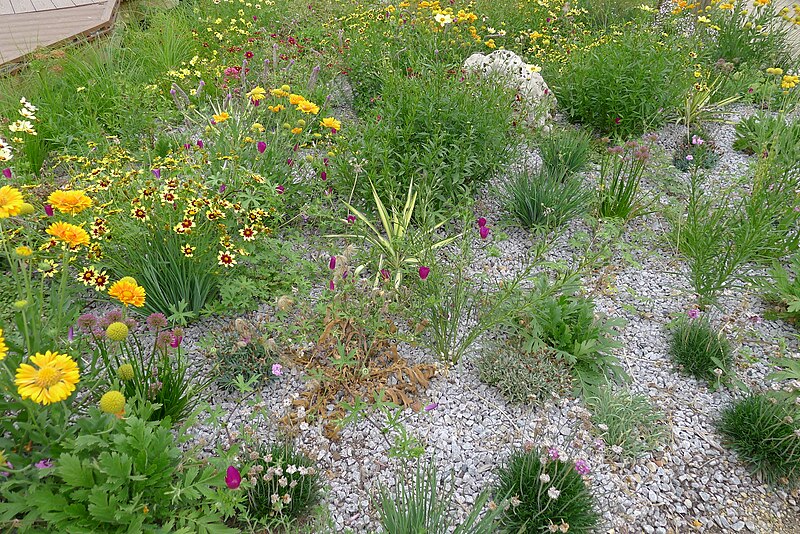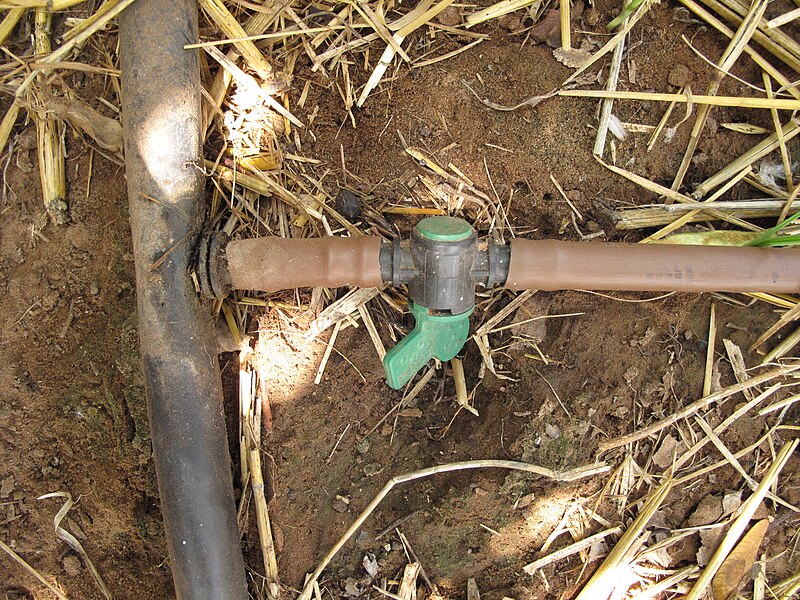
Xeriscaping isn’t the absence of landscaping. It’s merely an efficient way of using drought-tolerant plants and grasses to conserve water. You don’t have to fill your yard with rocks and cactus to join this trendy movement. This beginner’s guide to xeriscaping can turn a barren yard into an enviable one.
What is Xeriscaping?
The Denver Water Department coined the term in 1981 by combining “landscape” with the Greek prefix “xero” meaning “dry.” More than half of the city’s potable water is used on lawns. By replacing thirsty turf with drought-tolerant grass, native plants, and hardscaping, you can cut a good chunk of your water bill.
Benefits of Xeriscaping
![[After] Most of the perennials to the right of the deck stayed in bloom even in September.](https://felixwong.com/gallery/thumbs/l/landscaping07-10.jpg)
Photo credit: Felix Wong CC BY-SA 4.0
The average American spends 91 hours a year mowing, fertilizing, and weeding their yard. The beginner’s guide to xeriscaping will help you drastically reduce that number. There are many other benefits.
- Xeriscape reduces your water bill by 60% or more
- Creates natural habitats for wildlife
- Increases the value of your property by an average of 15%
- Saves the environment by eliminating the need for mowing, herbicides, and fertilizers.
- When other lawns go dormant, your landscape will shine.
- Xeriscape plants will thrive in shade
A Beginner’s Guide to Xeriscape Gardens and Landscape Design

Photo credit: James Steakley / CC BY-SA 4.0
Half the battle with xeriscaping is designing your back or front yard. It’s not just picking a bunch of landscaping rocks or choosing drought-resistant succulents. You should consider the soil, which part of the yard gets the most sun, slopes, and companion planting.
You can group plants with similar needs. Separate the flower beds with mulched borders, pavers, or stones. If you place the drought-resistant plants higher in the yard, the plants that need more water will benefit from the runoff.
Xeriscaping makes the landscape work with less water without abandoning your tastes.
Drought-Resistant Plants
You’ll find a host of ornamental grasses and plants that don’t need much water to thrive.
- Coneflowers
- Marigolds
- Lavender
- Daffodils
- Iris
- Sedum
- Coreopsis
- Verbena
- Native plants to your region
Irrigation Systems and Water Conservation for Xeriscape Gardens

Photo credit: Juandev / CC BY-SA 3.0
Whether it’s grass, succulents, or low maintenance plants, you’ll still need to water occasionally. A drip irrigation system uses little water and delivers moisture to the plant’s roots. Drip irrigation is more efficient and saves you money in the long run.
Xeriscape Maintenance
Low-maintenance doesn’t mean “no-maintenance.” Plants and shrubs still need pruning and trimming, and although buffalo and Bermuda grass tend to reseed themselves, they need some mowing and edging. You may also have to do some weeding around the landscaping rocks and replace mulch every few years.
Downside to Xeriscaping
There are some drawbacks to a yard without much grass.
- Little room for kids or pets to play
- Tough to clean up leaves (you can’t rake rocks)
- Weeds will sprout with or without water.
- You lose the “air conditioning” effect of a big lawn.
Principles of Xeriscaping
When designing or hiring a local landscape expert to xeriscape a yard, there are some costs to keep in mind.
- Design
- Irrigation
- Mulch
- How much turf to plant
- Drought-resistant plants
- Maintenance
You’ll also need patience. Drought-tolerant grasses and plants take a little while to get established. But a little work establishing your xeriscaped yard can save you a lot of time, money, and water down the road.
Main Image: CC BY-SA 3.0